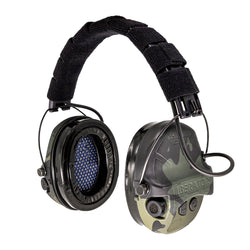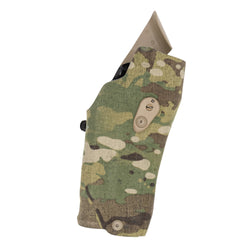In high-stress situations, the ability to provide immediate medical care can mean the difference between life and death.
Baer Solutions, known for its commitment to personalized training, offers a Medical Applications Course tailored for law enforcement professionals. The course emphasizes the M.A.R.C.H. algorithm, a systematic approach to trauma care, ensuring officers and responsible citizens are equipped to handle medical emergencies effectively.

This article is the first in a five-part series covering the course, breaking down key concepts and skills.
About Baer Solutions
Baer Solutions stands out in the training industry by focusing on individualized instruction. Their core tenets include providing one-on-one feedback, understanding each student’s needs, and refining foundational skills. They offer a range of courses, including pistol and rifle training, leadership development, and specialized medical applications for both civilians and law enforcement personnel.
Meet Paul Pollack
Leading the Medical Applications Course is Paul Pollack, known as “Doc” Pollack. A former Fleet Marine Force Corpsman with deployments to Iraq and Afghanistan, Paul has extensive experience teaching Tactical Combat Casualty Care (TCCC) and Combat Lifesaver courses to Marines.
Currently, he serves as an EMS Critical Care Paramedic, District Chief, and a deputy under the Special Operations Division of his Sheriff’s Office.

Understanding the M.A.R.C.H. Algorithm
At the heart of the course is the M.A.R.C.H. algorithm, a mnemonic that prioritizes medical interventions based on the severity of injuries.
Paul explains, “The MARCH algorithm is what we use during the indirect threat care phase to provide cognitive offload. It’s a mental checklist that prioritizes what kills you the quickest.”
- Massive Hemorrhage: Address life-threatening bleeding immediately using tourniquets or hemostatic agents.
- Airway: Ensure the casualty’s airway is clear and open.
- Respiration: Assess and support breathing, addressing any chest injuries.
- Circulation: Monitor blood circulation and manage shock.
- Hypothermia: Prevent the casualty from becoming cold, as it can worsen outcomes.

Student Tristen Mayfield highlighted the algorithm’s impact:
“M.A.R.C.H. influences everything I do in a medical situation involving trauma. From the time I start assessing a patient before I even make it to them, I can look at them and see what injuries are obvious. And then whatever is not obvious, I can pick up with M.A.R.C.H.”
The course integrates skills training with live scenarios, including shooting drills that simulate stress under fire with an officer down, reinforcing decision-making under pressure. You’ll practice each step of the algorithm before applying it in a flat-range environment, transitioning from direct threat care to indirect care, where M.A.R.C.H. comes into play.

“It’s a really good way to keep your mind calm and busy, away from the stress, because you actually have to be processing what you need to do.” – Tristen Mayfield
This structured approach provides a cognitive offload during high-pressure situations, allowing you to systematically address the most critical injuries first. By internalizing the M.A.R.C.H. algorithm, you can maintain composure and ensure no vital step is overlooked.
The Leadership Role of a Trained Responder
Beyond technical skills, Paul underscores the leadership role of trained responders:
“If you have the most medical training, you may provide that calmness in the storm that’s going to be contagious towards others… What we’re doing is we’re maintaining positive control of the scene, which allows us to shift the momentum from stopping the killing to stopping the dying, which ultimately saves lives.”
Why Should You Carry a Tourniquet?
Uncontrolled bleeding is one of the leading causes of preventable death in trauma situations. Carrying a tourniquet gives you the ability to respond immediately to life-threatening hemorrhages.

Seconds matter in these situations, and having a tourniquet within reach can mean the difference between survival and fatal blood loss. Modern tourniquets like the CAT Gen 7 are compact, easy to use, and effective when applied correctly, making them a critical addition to your everyday carry gear.
Take Your Training Further
Baer Solutions’ Medical Applications Course, under the expert guidance of Paul Pollack, equips you with essential skills to manage medical emergencies effectively. By mastering the M.A.R.C.H. algorithm and familiarizing yourself with tools like the Safariland Tourniquet System, you can enhance your readiness and response capabilities.
Interested in sharpening your medical response skills? Baer Solutions offers upcoming courses. To register or inquire about custom training solutions, visit their website.
Stay tuned for our next article in this series, where we’ll break down physiological “Timers and Switches.”











